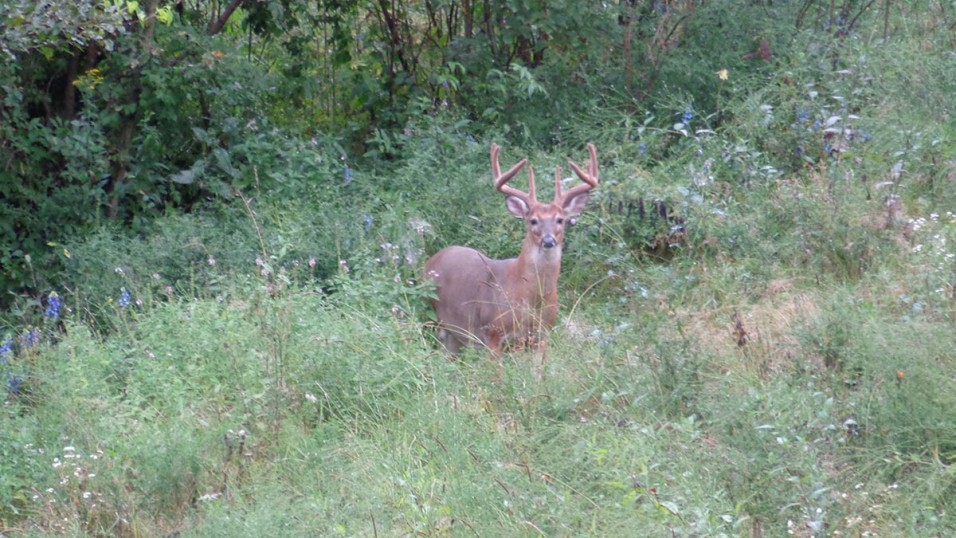A deer on its feet in daylight is a huntable deer. Filling a deer tag requires intercepting a deer traveling in daylight hours. This is accomplished by having some knowledge of when and where they will be on their feet in legal shooting hours. September and October see a lot of variation in daylight deer activity. September offers very good daylight activity. October starts out slowly buts ends up with a bang on the daylight activity scale. Let’s look at the four stages of daylight activity that occur in September and October.
Stage One, Opening Day Thru End of September
From opening day until the end of September, deer remain in their summer patterns. They can be actively on their feet in the early morning but especially during the couple hours prior to sunset. This makes September a very good time to be in the field. This can be the best time of year to catch deer actively moving during daylight hours.
Stage 2, The October Lull
Once October arrives deer activity in daylight decreases. My experience has been that the first half of October sees a noticeable decrease in daytime deer movement making for tough hunting, the “October Lull”. That said, I have tagged a number of real nice bucks during that time. The key to finding deer on their feet during shooting hours now is to hunt close to their bedding areas. I’ve noticed that when deer have a good acorn crop to feed on at this time of year, they bed close by. Locate oaks dropping acorns and if there is sign of deer feeding on them, now you have a worthwhile spot to set up. Deer, even now, often arrive at this food source in daylight hours. Set up downwind and deer will often show during shooting hours. Any seasoned hunter is aware of this. The key is to find a number of these spots because deer will quickly become aware of your presence at each one. After one or two sits you will have burned up these spots. Every year some of the biggest bucks taken are shot during the “October Lull”.
Stage Three, Pre Rut
By mid-October many bow hunters are gearing up for the coming rut and plan to concentrate on hunting the last few days of October thru the end of early bow season in November. Many ignore devoting serious time to the pre-rut, roughly October 16-26. While the rest of the deer population, young bucks and does, are still in the “October Lull” mode and laying low, older bucks seem to be the only ones active and on their feet in daylight. Many older bucks are relocating to areas they will patrol for breeding purposes, moving miles away. They will remain there until they have bred all the does they can during that estrus cycle, then move on to look for more receptive does elsewhere. This pre-rut timeframe is the only time during the hunting season when the majority of deer I see moving during daylight are older bucks. This past season on October twentieth I set up to hunt a particular older buck. Two hours before sunset a two year old, eight pointer passes within five yards of the tree I was in. The next two hours four more older age class bucks passed by within shooting distance. The last of them wasn’t the buck I was hunting for but was too good to pass. He stuck to heavy cover never giving me a clear shot. Daylight was fading fast as I watched him walk away, ignoring my calls. Fishing my bow rope out of my pocket, I was attaching it to my bow as I prepared to call it a day. From behind me I heard something, turning to see the buck I’d originally intended to hunt only fifteen yards away. He was gone before I could nock an arrow. During this sit six different bucks, mostly three and four year olds, got within shooting distance. It was my best hunt of the year.
Stage Four, The Rut
The last few days of October see a major increase of daylight activity by all bucks and breeding age does. The main rut is days away and the whitetails’ daylight activity is at its peak for the year. It’s prime time for seeing deer. For those who can’t or haven’t taken the time to properly scout, it’s the best time of the year to “get lucky”.
